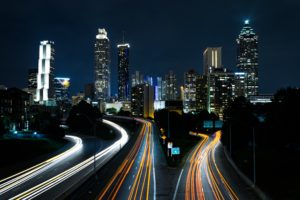- What is the mission and vision of Oaro?
We use the digital world to verify the real one. At Oaro, it’s not about technology, it’s about truth.
When we’re asked what Oaro does, there are a few different answers we could give. We create and deliver secure, enterprise-grade applications to enhance our clients’ ability to thrive in the digital economy. We contribute to a future where the gap between information in the digital realm and the real world is much narrower than today. That’s why major institutions and businesses from across the globe call us when they need to verify first, trust second. Onboard, and admit your people faster, keep their information and yours secure — and help the truth move a whole lot faster.
2. Why is trustworthy digital identity critical for existing and emerging markets?
The word ‘trust’ originates from Old Norse treysta, meaning “to rely on, make strong and safe.” The digital identity landscape today is anything but treysta-worthy! Data breaches, password overload and the privacy abuses of big tech have all contributed to the situation we currently find ourselves in. Our personal data is siloed, often for sale to the highest bidder (legally and illegally), and these problems just seem to be multiplying as digital services become pervasive.
Most of us will agree that digitization is desirable, and that it unlocks significant economic value. At Oaro, we are building products that go beyond pure identity functionalities, but most use cases our clients share with us cannot be successful without a reliable identity solution at the core. We also don’t believe there is going to be a major distinction between technology in the developed world and the emerging markets going forward. If anything, emerging markets enjoy the advantage of agility when it comes to choosing the right tools for the job. We have boots on the ground in Mexico, and are seeing strong uptake of Oaro Identity there. Follow us on social media or visit Oaro.net for an announcement in the coming weeks!
3. How will digital identity transform the Canadian and global economy? How does Oaro address challenges associated with this transformation?
Much has been said on this topic already, and while we agree entirely with DIACC’s estimates of the economic benefits of digital identity for the Canadian economy, we are cautious about predicting the future. Rather than feeding the hype cycle, Oaro has taken the path of quietly working with our clients to solve real business problems, while rigorously measuring the results.
Oaro is focused on creating trust in a digital world. Our technology is revolutionizing how leading organizations authenticate and authorize the flow of their digital information. Our product, Oaro Identity, connects people to their identities and simplifies your business processes while doing it. Normally, increased security comes with additional layers of process, but the opposite is true with Oaro Identity — as processes become simpler, they become more secure.
4. What role does Canada have to play as a leader in the space?
Canada has a long tradition of leadership in when it comes to setting standards. 150 years ago, North America had 144 official time zones. One fateful night, railroad engineer Sir Sandford Fleming was forced to spend the night in a train station because of confused timetables. This uncomfortable situation led him to advocate tirelessly for international standard time, which we now take for granted.
Oaro’s position is that digital identity is broken, and much like the world before standard time, we are all suffering from the resulting confusion. Canadian businesses have demonstrated global leadership in the identity space, and it is now up to Canadians themselves to embrace these new technologies in everyday life.
5. Why did Oaro join the DIACC?
Oaro strongly believes that solving the challenge of modernizing digital identity takes a collaborative approach. We are proactively working with several international organizations, such as the International Civil Aviation Authority’s (ICAO) newly formed Trust Framework Study Group, which seeks to establish identity standards for global aviation security. We are also a member and node operator of Alastria in Spain, a non-profit association which promotes standards-based digital identity in Spain and throughout Europe. When we met other DIACC members at IdentityNORTH and saw the valuable work being done, we knew it would be a great fit for Oaro.
6. What else should we know about Oaro?
Working with the Saint John Airport, we created a first-of-it’s-kind solution for secure entry for airport employees and contractors.
As one of the fastest-growing small airports in Canada, serving nearly 300,000 passengers annually, Saint John Airport has long been recognized as one of Canada’s most innovative flight hubs. The executive team has focused on putting into place systems that can scale as the airport grows. With Oaro’s help, Saint John was able to implement a system where authorized employees only had to approach a secure door, and face into a camera in order to gain access.
Oaro’s technology recognizes full-motion video, so would-be criminals can’t gain access using high resolution photographs. Lost or stolen swipe cards are a non-issue. Each user is authenticated in real time, and a tamper-proof record of their access is stored. The result is an easily scalable, entirely secure system that leveraged a large portion of the airport’s existing technology spend to improve both safety and efficiency.




